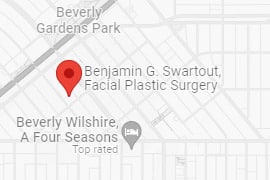Have you noticed fine lines creeping up around your eyes, making you look more tired than you feel? Botox is a popular and effective solution for softening these lines and refreshing your appearance without surgery. But treating the eye area requires precision, as this delicate skin demands a specialized approach to achieve natural-looking results.
Understanding how Botox works around the eyes can help you make an informed decision. From reducing crow’s feet to achieving a subtle eyebrow lift, Botox can enhance your features when applied correctly. Keep reading to learn how this treatment can benefit you and what to expect from the process.
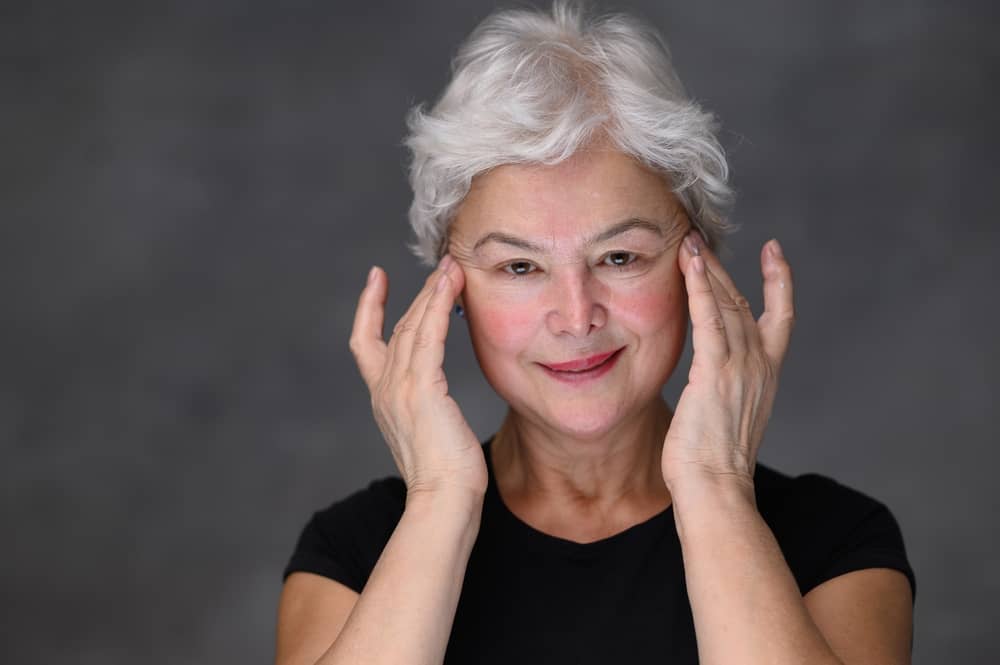
How Does Botox for the Eye Area Differ from Other Areas?
The skin around the eyes is thinner and more delicate than other areas of the face, making Botox injections in this region particularly precise. To prevent an unnatural, frozen look, lower doses are used, and the technique must be carefully adjusted. An experienced injector understands how much Botox to use and where to place it for the most natural results. Choosing a specialist ensures a smoother, more youthful appearance while maintaining facial expression and proper muscle function.
Common Uses of Botox Around the Eyes
Botox is a versatile treatment that can address a variety of cosmetic concerns around the eyes. Whether you’re looking to smooth fine lines, reduce wrinkles, or achieve a subtle lift, Botox offers a non-invasive solution with noticeable results. Below are some of the most common ways Botox is used to enhance the eye area.
Botox for Under-eye wrinkles
Under-eye wrinkles, also known as fine lines or crepey skin, can make the face appear older and more fatigued. Botox can be strategically injected around the lower eyelid area to relax the muscles that contribute to these wrinkles, creating a smoother, more youthful appearance. However, due to the thin and delicate nature of the skin, precise dosing and placement are crucial to avoid unwanted side effects like puffiness or an unnatural look. When administered by an expert, Botox can subtly refresh the under-eye area without affecting natural expression.
Botox for Crow’s feet
Crow’s feet are the fine lines that extend from the outer corners of the eyes, often becoming more pronounced with age and repeated facial expressions. Botox effectively softens these wrinkles by relaxing the underlying muscles, preventing excessive contraction that deepens the lines. When applied correctly, Botox can smooth crow’s feet while still allowing for natural expression. Since the eye area is delicate, precise dosing is key to avoiding an overly frozen look. A skilled injector ensures balanced, natural results that enhance your overall facial appearance.
Botox Bunny lines
Bunny lines are the fine diagonal wrinkles that appear on either side of the nose when you scrunch it, often becoming more prominent with age or repeated facial expressions. While Botox is typically associated with smoothing wrinkles around the eyes and forehead, it can also be used to soften bunny lines. By relaxing the muscles responsible for these lines, Botox can create a smoother appearance without affecting natural facial expressions. A skilled injector will use a conservative approach to avoid over-relaxation, ensuring a balanced and natural result.
Eyebrow lift
A Botox eyebrow lift is a non-surgical way to create a more lifted and refreshed look by subtly elevating the brows. By injecting Botox into specific muscles that pull the brows downward, the treatment allows the opposing muscles to lift the brows naturally. This can help open up the eyes, reduce the appearance of hooded eyelids, and create a more youthful expression. The procedure is quick, with minimal discomfort and no downtime, making it a popular option for those looking for subtle yet noticeable rejuvenation.
Botox Before & After Photos
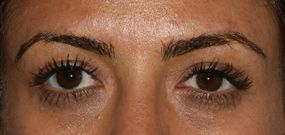
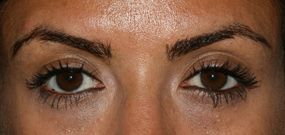
*Each patient is unique and individual results may vary.
Can Botox Help Hooded Eyes?
Botox can provide a subtle lift to sagging eyelids by relaxing the muscles that pull the brows downward, resulting in a slight elevation of a few millimeters. This makes it an excellent option for individuals with mild to moderate hooding, which is more common in younger patients. However, those seeking a more dramatic improvement may consider combining Botox with other treatments, such as dermal fillers or even eyelid surgery. Consulting with a specialist will help determine the best approach for your aesthetic goals.
Can Botox Treat Under-Eye Bags or Dark Circles?
While Botox is highly effective for reducing wrinkles and fine lines, it is not designed to treat under-eye bags or dark circles. These concerns are often caused by volume loss, fat displacement, or pigmentation issues—none of which Botox can correct. However, there are alternative treatments that can help.
Dermal fillers can restore lost volume and smooth out hollows, while laser treatments and chemical peels can improve pigmentation. If you’re looking for a more dramatic transformation, surgical options like lower blepharoplasty may be the best solution.
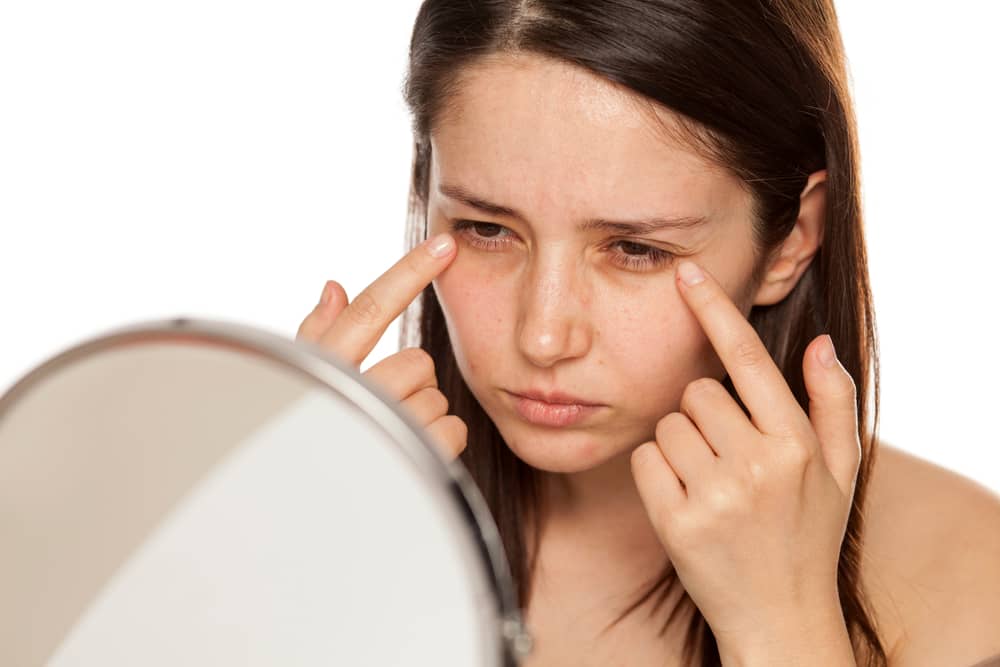
How Long Does Botox Last Around Eyes?
Botox around the eyes typically lasts between three and four months, with results becoming visible within three to seven days after treatment. The longevity of Botox can vary depending on individual factors such as metabolism, muscle activity, and the number of previous treatments. First-time users may notice that their Botox wears off slightly faster, but with consistent follow-up treatments, the effects tend to last longer. Regular maintenance sessions can help sustain a smoother, more youthful appearance over time.

Secure Your Safe Procedure Experience with Dr. Swartout
Join our satisfied clients who’ve experienced safe, effective treatments.
How to Fix Puffy Eyes After Botox
The quickest and most effective way to reduce swelling after Botox is by applying cold compresses to the area. The cool temperature helps constrict blood vessels, reducing inflammation and minimizing puffiness. Since Botox injections can sometimes cause temporary fluid retention around the delicate eye area, using a cold compress for short intervals can provide quick relief and promote a smoother recovery.
In addition to cold compresses, there are several other ways to manage puffiness and encourage optimal results:
- Keeping Your Head Elevated: Sleeping with your head slightly elevated can prevent fluid from pooling around the eyes, reducing morning puffiness.
- Staying Hydrated: Drinking plenty of water helps flush out excess fluids and maintain overall skin health.
- Avoiding Strenuous Exercise: High-intensity workouts can increase circulation and swelling, so it’s best to avoid them for at least 24 hours post-treatment.
Ultimately, working with a board-certified plastic surgeon who understands the nuances of Botox is the best way to ensure a smooth recovery process. An experienced specialist will guide you through proper aftercare, minimizing side effects while helping you achieve natural, beautiful results.
Choosing the Best Botox Specialist
When it comes to Botox injections, experience and precision make all the difference. The eye area is especially delicate, requiring a specialist who understands facial anatomy and injection techniques. A skilled injector ensures natural-looking results, avoiding complications such as drooping eyelids or an overly frozen appearance. Opting for an experienced provider significantly improves your chances of achieving a youthful, refreshed look while maintaining normal muscle function.
Dr. Benjamin Swartout is a highly trained specialist with extensive experience in facial aesthetics. With a background that includes Harvard education and medical training at Albert Einstein College of Medicine, he has contributed to the field with numerous publications on aesthetic facial surgery. His expertise ensures that patients receive the best possible care for Botox treatments around the eyes. Schedule a consultation today by calling 310-275-0704 or visiting our contact page.

